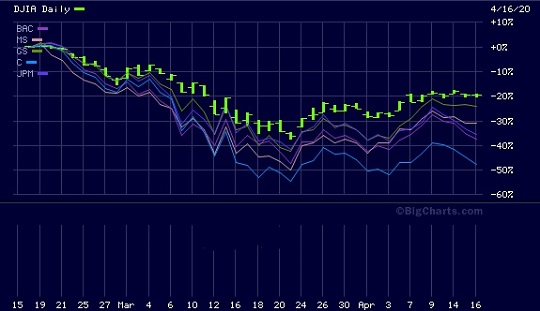Investing in the stock market can be a thrilling and potentially profitable venture. However, navigating the complexities of stock trading requires careful analysis and strategic decision-making. One tool that can greatly enhance your trading success is a trading journal.
In this article, we will explore what a trading journal is, why it is important, how to start one, and compare the top five trading journals available.
What is a Trading Journal and Why is it Important?
A trading journal is a vital tool for traders in the financial markets. It serves as a record where traders document their trades, strategies, and market observations. By analyzing past trades, traders can identify patterns, assess the effectiveness of their strategies, and make informed decisions in the future.
Keeping a trading journal offers several benefits. It allows traders to track progress, evaluate emotions during trades, promote self-discipline, and provide valuable data for measuring overall performance.
By documenting specific details of each trade, such as entry/exit prices and rationale behind the trade, traders can gain insights into their decision-making processes and improve their profitability.
In summary, a well-maintained trading journal is crucial for traders to enhance their performance by learning from past experiences and making informed adjustments to their strategies.
How to Start a Trading Journal and What to Include
Starting a trading journal is crucial for traders looking to improve their performance. Here are the key steps:
- Choose your preferred format: Decide whether you want a digital or paper-based journal.
- Set up categories: Include trade date, entry/exit points, position size, and profit/loss.
- Determine journaling frequency: Update after each trade or at the end of the day.
- Establish a routine: Consistently update your journal for accurate records.
Essential components for your trading journal include:
1. Trade details: Stock symbol, entry/exit prices, stop-loss levels, and target prices.
2. Trade rationale: Describe the reasoning behind each trade.
3. Emotional state: Document emotions before, during, and after each trade.
4. Lessons learned: Reflect on outcomes and note valuable insights or mistakes.
By following these steps and including these components in your trading journal, you can analyze your trades effectively and make informed decisions in the future.
The 5 Best Trading Journals: A Comparison
To effectively track and improve your trading performance, a reliable trading journal is essential. Here are the top five trading journals on the market:
- Journal Trader: Offers a customizable interface and analytical tools for tracking performance metrics.
- Edgewonk: Provides detailed reports and visual representations of trading habits for in-depth analysis.
- Tradervue: Simplifies trade imports with integration options for popular brokers and offers comprehensive performance analysis features.
- StockTickr: Ideal for active traders with its alert system and robust reporting tools for historical data analysis.
- Evernote Trading Journal Template: Allows customization to tailor the journal to individual preferences.
Choose the journal that aligns with your needs, whether it’s user-friendly interfaces, comprehensive analytics, seamless integration, active trade alerts, or customization options. Take control of your trading journey by implementing an organized and insightful record-keeping system.
Comparing Different Trading Journals: Pros and Cons
Choosing the right trading journal is crucial for effectively tracking and analyzing trading performance. Let’s compare some popular options:
-
Journal Trader: Intuitive interface, customizable categories, comprehensive analysis. Limited integration with brokers.
-
Edgewonk: Extensive performance analytics, detailed reports, visual representations. Steeper learning curve for beginners.
-
Tradervue: Integration with popular brokers, comprehensive analysis. Less intuitive interface compared to others.
-
StockTickr: Alert system for active traders, robust reporting tools. Limited customization options.
-
Evernote Trading Journal Template: Flexibility through customizable templates. Lacks specialized features compared to dedicated journals.
Consider factors like ease of use, compatibility with your platform/broker, analytical capabilities, customization options, and budget when choosing a journal that aligns with your preferences and enhances your trading experience.
Best Trading Journal: Conclusion and Final Thoughts
Keeping a trading journal is an indispensable practice for investors seeking to enhance their performance in the stock market. By meticulously documenting trades, analyzing past results, and reflecting on emotions and strategies, traders can gain invaluable insights that improve their decision-making abilities.
When it comes to selecting the best trading journal, individual preferences and requirements play a significant role. However, Journal Trader stands out as an exceptional choice due to its user-friendly interface, customizable categories, and comprehensive performance analysis capabilities.
This journal provides traders with a seamless experience as they navigate through their data, allowing them to focus on gaining insights rather than wrestling with complicated software.
Nevertheless, it’s important to note that each mentioned trading journal offers unique features that may appeal to different traders based on their specific needs. For instance, TradeTracker excels in its ability to generate detailed reports and provide visual representations of trade history.
On the other hand, InvestPro boasts advanced risk management tools that ensure traders make informed decisions while minimizing potential losses.
Consistency in using a trading journal is key to fully reaping its benefits. The act of regularly logging trades and reviewing past performance helps traders identify patterns or trends that may otherwise go unnoticed. By understanding what works and what doesn’t, they can refine their strategies over time and increase their chances of success.
[lyte id=’qefG3V0qfck’]




